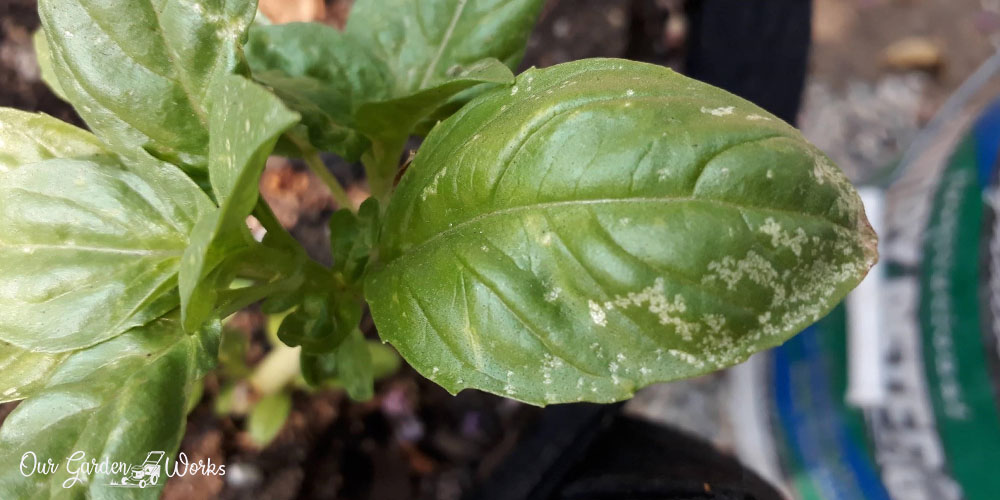Basil is one of the most delicious herbs added to meals to add an extra flavor. If you are growing your herbs at home and noticed the white spots on basil leaves, it can mean a lot of things.
To provide the right solution to your problem, it’s essential to figure out what is causing the spots in your plants.
In this post, we’ll share the most common causes of white spots in most herbs like basil.
We will also provide some solutions so you can defend, protect and maintain the health of your plants.
If you noticed the white spots early you can still save your basil. Let’s start uncovering the culprit that left white marks on your basil!
3 Common Causes of White Spots on Basil Leaves
While it’s easy to blame everything on insects, other several factors can also trigger changes in the color and appearance of leaves.
These include:
1. Feeding Trail or Insects on Leaves
Let’s start with the most common cause of white spots on plants like basil.
Most insects are found on the top or under the leaves of plants. They feed on the sap or the cell membranes of leaves and leave trails ‘scars’ on the poor basil leaves.
Common insects in basil include:
(1) Leafminers: These insects can be distinguished due to the patterns they leave on the leaves that they feed on.
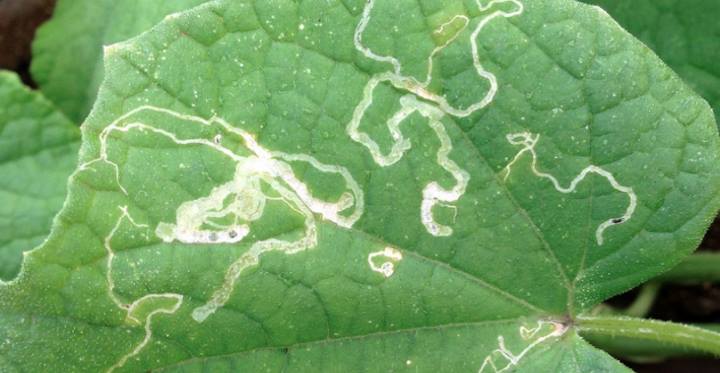
The damaging leafminers are larvae that look like black flies during their adult stage. Leafminers attack the foliage and stem of plants. They can be hard to catch and attack at any time of the day.
(2) Thrips: These small but terrible pests are microscopic and responsible for millions of agricultural losses every year.
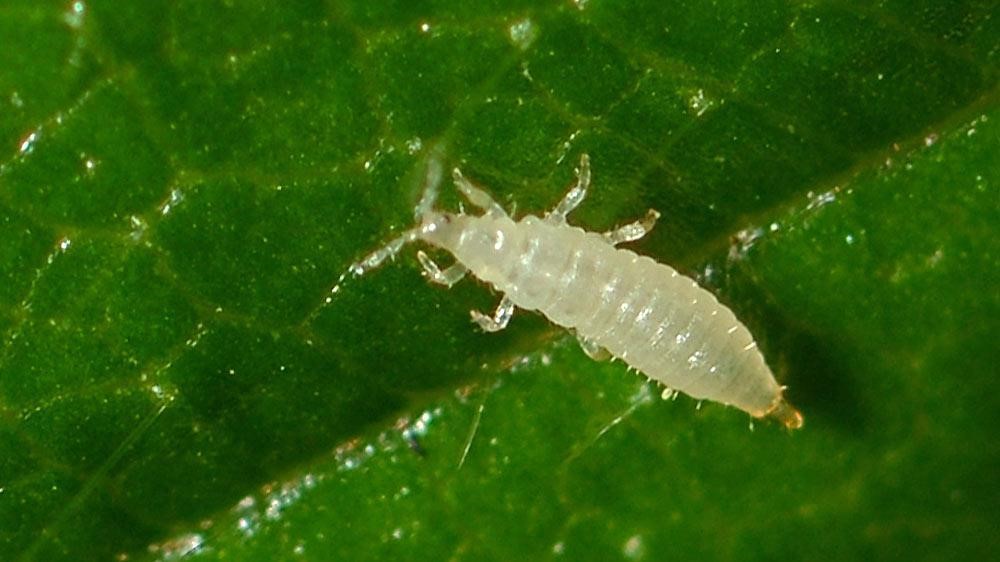
Larvae thrips are the microscopic white spots that can be seen on most dark green leaves of plants.
Adult thrips are green and are less than a millimeter in size. You can usually find them on top or underside of the leaves.
(3) Aphids: One of the most common pests in plants is aphids. They suck honeydew or sap on plants which also attracts other pests like ants.
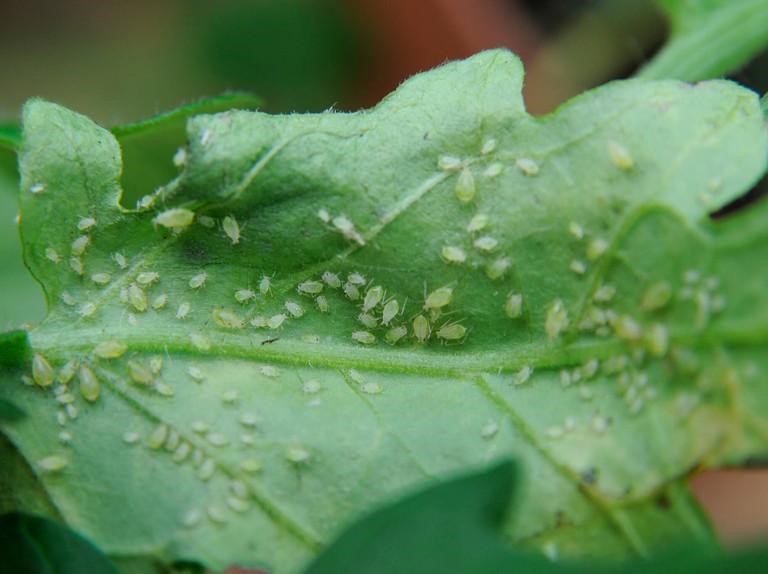
As they puncture the leaves and stems of your plants, they may leave their feeding trials as small white spots.
(4) Leafhoppers: These are wedge-shaped insects that are less than a millimeter in size.
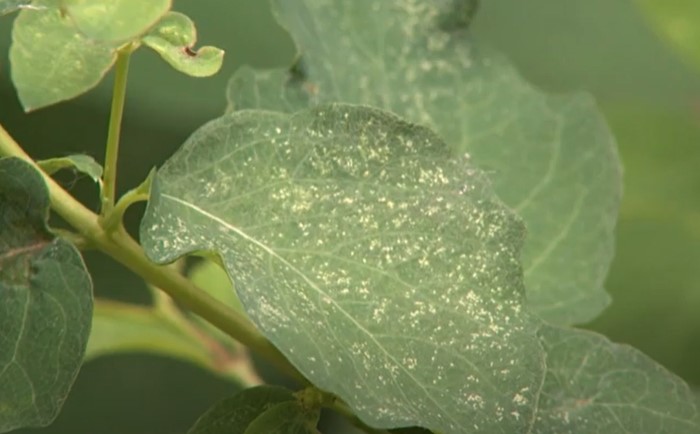
They also suck the honeydew or sap in plants. Their saliva leaves cell damage on leaves which causes the white spots.
Leafhopper has almost the same feeding trails as leafminers so it can be hard to distinguish which is damaging your plants.
(5) Spider mites: These insects live under the leaves and suck leaves dry of sap. Mild infestations of spider mites are often seen as white spots.
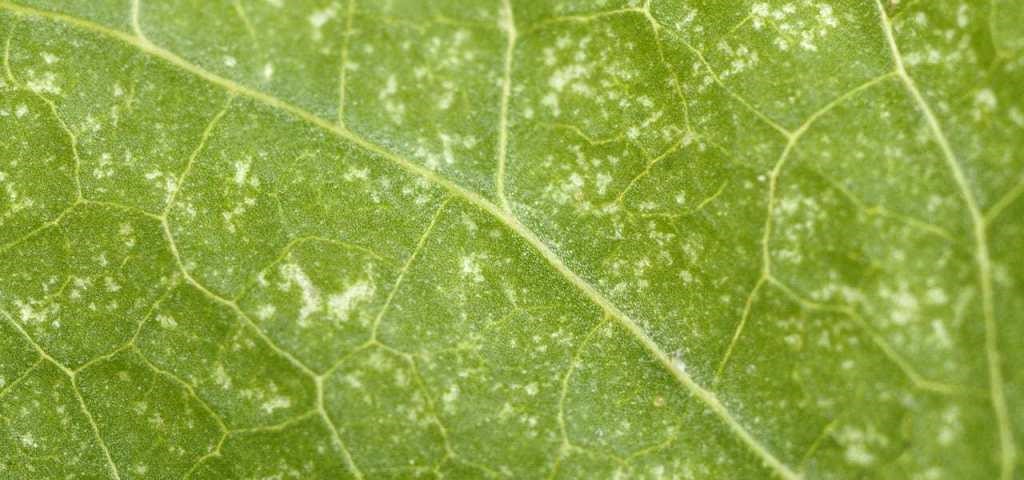
If left untreated, spider mites can puncture holes on your basil leaves and kill the plant entirely.
(6) Whiteflies: It’s either the white spots are the whiteflies themselves or the damage they inflicted on your basil leaves. They scatter when you try to touch them and attack your plants during the day.
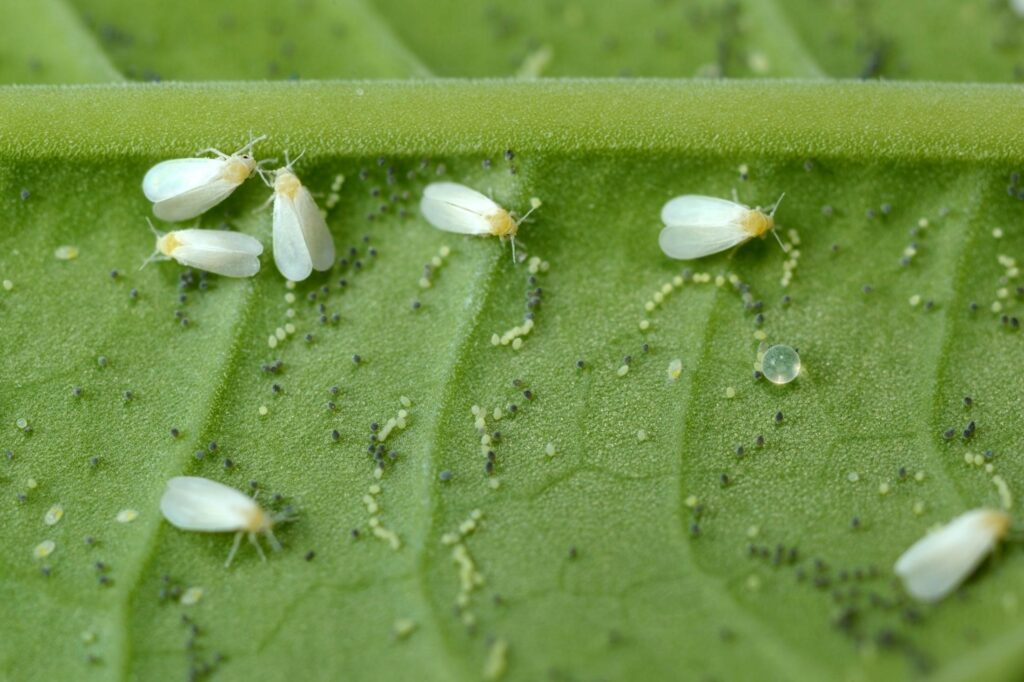
3 Ways To Control Insects on Basil Plants
Sneaky pests are hard to control. However, with consistent care and monitoring, you can eliminate them faster.
Here are some of the ways to save your basil plants from pests:
(1) Hand-picking insects
By far, the easiest way to get rid of insects and their eggs is by wiping or picking them from the leaves.
Since you are dealing with microscopic insects, wiping the leaves with soapy water is the best solution.
Prepare a container with the soapy water solution where you can deposit all visible insects.
(2) Use neem oil
If you are not certain of the type of insect that feeds on your basil plants, the safest way to control them is neem oil.
Neem oil is an organic insecticide, miticide, and fungicide in one solution. However, it can only be effective if it gets in contact directly with the insects.
Apply it consistently on basil or at the time of the day when they are most active.
(3) Take advantage of predator insects:
You can rely on the diet of other insects if pests are abundant on your plants. It is an ancient technique used in farms to naturally control infestations.
Good insects that you can use are:
- Ladybugs
- Brown lacewings
- Soldier beetles
- Damsel bugs
- Spiders
- Pirate bugs
- Midges
2. Powdery Mildew
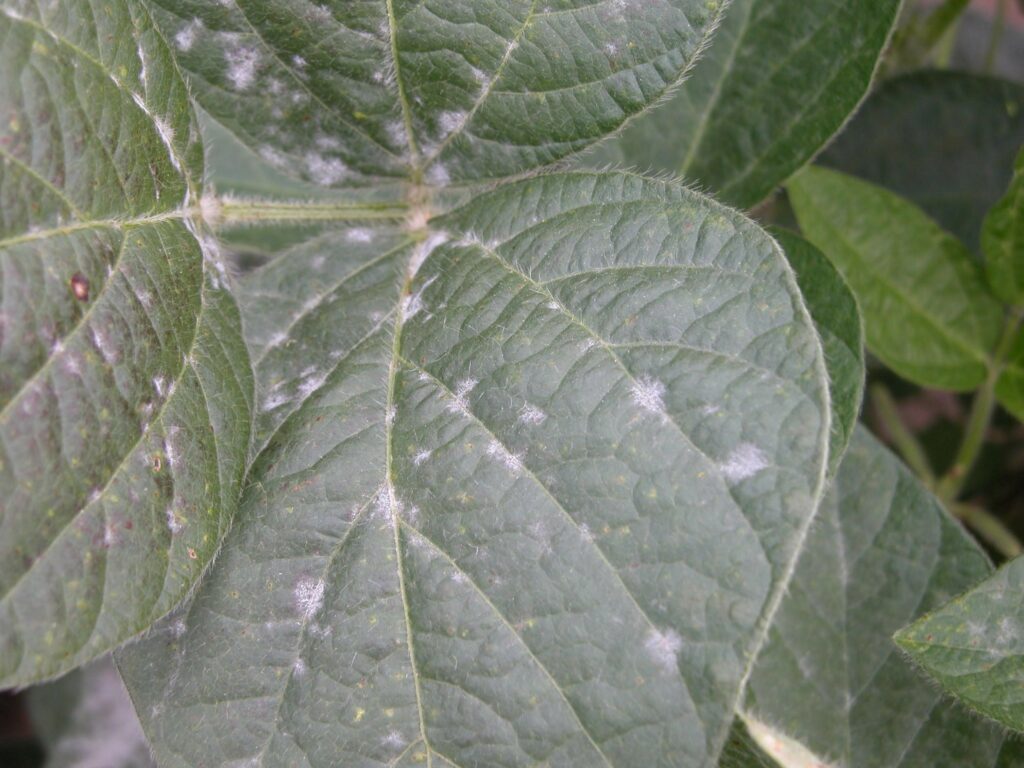
Another possible cause of white spots in basil leaves is a fungal disease called powdery mildew.
It has a white fuzzy texture that can be found on both sides of the leaves. It propagates in humid temperatures and the fungus spores spread through the wind and water splashes when watering.
You’ll know it’s powdery mildew if most of the infected are the lower leaves near the soil. It also doesn’t need moisture to transfer to other plants unlike other types of mildew. It spreads quickly so, the earlier you detect it the better.
How to treat & prevent powdery mildew on basil?
The spores of a fungus can spread like wildfire in plants. As soon as you see any signs of disease in your plants, do the following methods:
- Remove the infected parts: Once the leaves are infected you can no longer save them from the fungal disease. You need to remove them to save the other parts of your basil plant.
- Sanitize tools used with the infected plant: The fungus spores can cling to insects and even to the tools that you use. Make sure to dip all the tools in soapy water on every use to avoid spreading the fungal disease. Also, change your clothes after treating an infected plant.
- Apply a fungicide: Choose an organic fungicide so that your basil leaves are still safe to eat. In that case, sulfur and neem oil can be beneficial.
3. Nutrient Deficiency
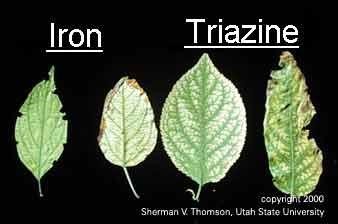
Plants low in iron can show signs of deficiency on the leaves of your plants.
White spots and pale new leaves are a sign of iron deficiency so make sure to choose a fertilizer rich in iron.
Tips To Keep Basil Leaves Free From White Spots
A stressed basil plant is a magnet of pests and diseases. Proper plant care and soil preparation for Basil will keep white spots at bay.
Learn more about basil and how to keep them healthy:
- Basil loves moist soil with good drainage. It is also the reason why basil grows well in containers and raised beds.
- It is a tropical herb that loves 6 to 8 hours of sun. Though a partial shade won’t hurt especially the scorching afternoon sun.
- You should also plant basil with the right distance between each other. Seedlings must be planted at a distance of 10 to 12 inches apart and 16 to 24 inch-distance for bigger varieties of basil.
- Cover the soil with mulch to help retain moisture in the soil during the warm season.
- Due to its juicy leaves, it is a common target of aphids, leafhoppers, and powdery mildew. Other pests and diseases in basil are:
- Fusarium wilt
- Gray mold
- Black spot
- Japanese beetles
- Downy mildew
- To boost the continuous production of basil leaves, you should start harvesting the leaves when it reaches the height of 6 to 8 inches.
- Consistently picking the flowers and harvesting basil leaves also helps the plant focus all its efforts to produce more foliage. It usually starts producing leaves when the temperature reaches 27 degrees Celsius.
- Underwatering and overwatering basil can make them weak and increase their susceptibility to diseases and pests.
Frequently Asked Questions(FAQ)
Can powdery mildew be cured?
Just like other fungal diseases in plants, powdery mildew can be cured using a fungicide. You can use neem oil or a homemade fungicide solution.
One fungicide solution that you can make at home is a garlic solution. Here’s how to prepare the solution:
Materials:
- 2 bulbs of garlic
- 1 quart of water
- Dish soap
- Cheesecloth
- Spray bottle
Directions:
- Remove infected parts of your basil plants.
- Sanitize the tools that were in contact with the infected parts.
- Crush or blend 2 bulbs of garlic.
- Mix it with water and filter the garlic bits with a cheesecloth
- Add 2 to 3 drops of dish soap
- Use it as a concentrate in a 1:10 ratio and transfer the diluted solution to a spray bottle.
Does basil need direct sunlight?
Basil grows and thrives in 6 to 8 hours of direct sunlight. However, it also grows well under indirect sunlight which is usually the case when you have indoor basil.
Lack of sun is one of the common causes of yellow basil leaves.
Is leaf spot in basil contagious?
Cercospora leaf spot in basil is a fungal disease with dark spots and a white center. It is contagious since the spores are spread through wind and water. Water splashes also transfer the spores from the soil.
To avoid that, you can add mulch to the soil to prevent splashing water directly on the soil.
Does vinegar kill powdery mildew?
Vinegar contains acetic acid and malic acid that have antimicrobial properties to fight fungal disease in plants. It prevents the growth of pathogens and controls the spread of powdery mildew.
To make a vinegar solution, mix 3 tbsps. Of vinegar to a gallon of water and transfer the diluted solution in a spray bottle. Raw vinegar can burn plants and should not be sprayed directly to plants.
Is it safe to eat basil with bacterial leaf spots?
If you’re having second thoughts about the safety of infected basil leaves, then most likely it’s not a good idea to use them.
Severely infected basil leaves that are already slimy, and have large patches of black or brown will no longer give the unique taste of basil leaves. However, it’s still safe to use basil leaves with a few small brown spots.
What does overwatered basil look like?
Overwatered plants will most likely show signs on its stem and leaves. The signs that your basil is overwatered are:
- Leaves start to yellow, droop, or wilt from the ground up.
- The rotten smell from the soil due to excessive moisture
- The roots are mushy brown and black which are signs of rot
- Stunted growth
Can you use hydrogen peroxide on powdery mildew?
Yes, you can use a hydrogen solution in treating powdery mildew. It is one of the solutions with the highest antibacterial properties as it is also used to treat wounds in humans.
To use it on your basil plants you need to dilute it with water. Here’s how:
Materials:
- 3% Hydrogen peroxide
- 1 gallon of water
- Spray bottle
Directions:
- Mix 1 quart of hydrogen peroxide to a gallon of water.
- Mix well
- Transfer to a spray bottle and use it as a mist on your infected plants. Make sure that the leaves are dripping wet on the infected parts of the plants.
- Apply daily to see better results.
Can basil get too much light?
Yes, seedlings of basil may not be strong enough to endure a full sun, unlike the mature ones. They need a partial shade until they become mature enough for the scorching sun.
If seedlings are receiving full sun, they can have:
- Leaf scorch
- Droopy leaves
- Discoloration
On the other hand, the signs mentioned above can also happen to mature basil plants if they don’t get enough sunlight.
Can you eat herbs with white spots?
White spots in herbs are common and harmless when eaten.
However, it may alter the potency of the leaves and affect the taste. If you want the full strength of the spice that you need from your herbs, you may want to skip on the infected ones and opt for healthier leaves.
Final Thoughts
We hope that this post has helped you figure out what’s causing the white spots on basil leaves.
As a reminder, it can only be due to three factors: pests, fungus, and lack of nutrients. We suggest always using organic and environment-friendly products in controlling pests and fungal diseases in your basil plants.
It’s always better to treat your basil If you see early signs of infestation or infection. Prevention is always key to healthy and delicious basil leaves.
Also, keep your basil plants nourished to give a partial immunity to the pests and fungal diseases that take advantage of stressed plants.
If you find this post helpful, don’t forget to share it with your friends and help protect their herbs too.
Were you able to get rid of the white spots in your basil plants? Let us know which method solved your problem in the comments below.
